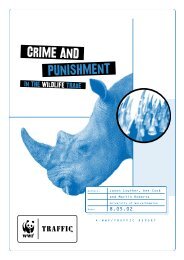In full swing: assessment of trade in orang-utans and ... - WWF UK
In full swing: assessment of trade in orang-utans and ... - WWF UK
In full swing: assessment of trade in orang-utans and ... - WWF UK
Create successful ePaper yourself
Turn your PDF publications into a flip-book with our unique Google optimized e-Paper software.
Clearly, as <strong>orang</strong>-<strong>utans</strong> do not naturally occur on Java or Bali <strong>and</strong> successful captive-breed<strong>in</strong>g is a very rare occurrence,<br />
they have been imported to the isl<strong>and</strong>s. Also, for the gibbons, when broken down by the isl<strong>and</strong>s <strong>of</strong> orig<strong>in</strong>, it becomes<br />
clear that over 75% <strong>of</strong> the gibbons encountered on Java <strong>and</strong> Bali have been imported. Thus, <strong>of</strong> the 531 <strong>in</strong>dividuals for<br />
which the isl<strong>and</strong> <strong>of</strong> orig<strong>in</strong> can be <strong>in</strong>ferred, 78 <strong>in</strong>dividuals (<strong>of</strong> one species) orig<strong>in</strong>ate from Java, 234 from Sumatra (5<br />
species) <strong>and</strong> 219 from <strong>In</strong>donesian Borneo (3 species).<br />
<strong>In</strong> general, species that are rarely encountered at bird markets are also rarely present <strong>in</strong> zoos or wildlife rescue centres<br />
(Figure 10). Müller’s Gibbon, however, is relatively frequently encountered at bird markets <strong>and</strong> zoos, but they are rather<br />
scarce <strong>in</strong> the wildlife rescue centres, whereas the converse can be said <strong>of</strong> Siamangs. Both species <strong>of</strong> <strong>orang</strong>-utan are<br />
relatively common <strong>in</strong> zoos, but for the Bornean Orang-utan, this is partially skewed due to the very large number<br />
present <strong>in</strong> Ragunan zoo. Most <strong>of</strong> these animals are scheduled to be transferred to one <strong>of</strong> the re<strong>in</strong>troduction programmes<br />
<strong>in</strong> Sumatra or Kalimantan.<br />
Table 10.<br />
Summary <strong>of</strong> species composition <strong>of</strong> gibbons <strong>and</strong> <strong>orang</strong>-<strong>utans</strong> observed <strong>in</strong> bird markets, wildlife rescue centres, zoological<br />
gardens <strong>and</strong> <strong>in</strong> private h<strong>and</strong>s on Java <strong>and</strong> Bali.<br />
Bird markets Wildlife rescue centres Zoos Private h<strong>and</strong>s Total<br />
H. moloch 7 15 55 1 78<br />
H. agilis 19 19 36 0 74<br />
H. albibarbis 3 9 23 0 35<br />
H. lar 1 0 0 0 1<br />
H. muelleri 10 1 19 0 30<br />
H. klossi 3 1 1 0 5<br />
Hylobates spp. 25 0 0 1 26<br />
S. syndactylus 21 43 55 23 142<br />
P. pygmaeus 18 29 107 0 154<br />
P. abelii 0 1 12 0 13<br />
Pongo spp. 0 0 0 1 1<br />
Total 107 118 308 26 559<br />
IN FULL SWING:ASSESSMENT OF TRADE IN ORANGUTANS AND GIBBONS ON JAVA AND BALI,INDONESIA 32


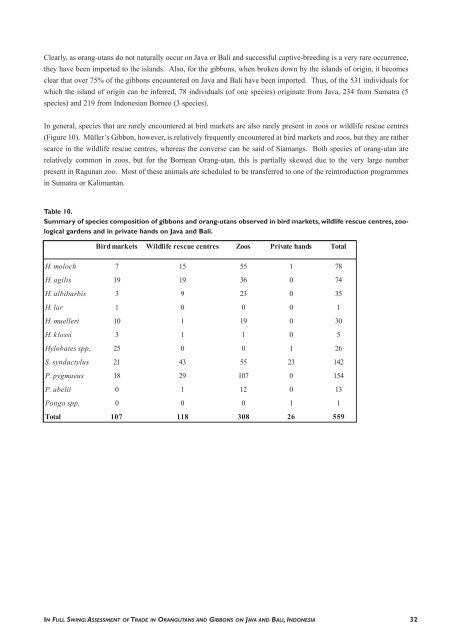
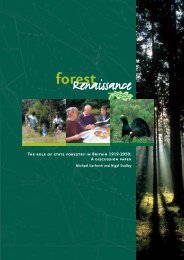
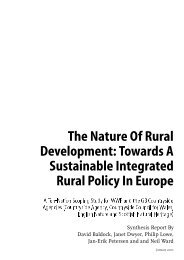
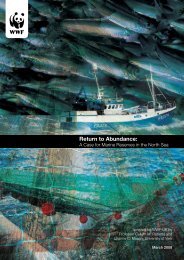

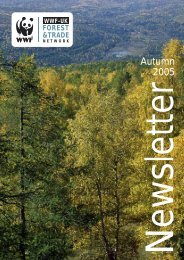

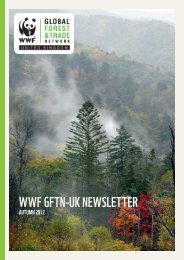
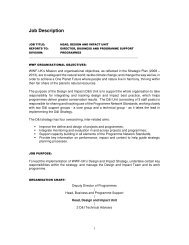
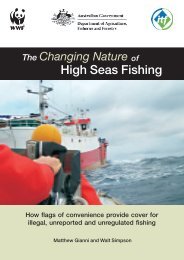
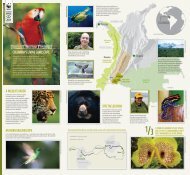
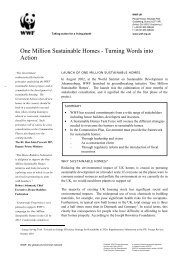
![[PDF] Causes for concern: chemicals and wildlife - WWF UK](https://img.yumpu.com/31929970/1/184x260/pdf-causes-for-concern-chemicals-and-wildlife-wwf-uk.jpg?quality=85)
